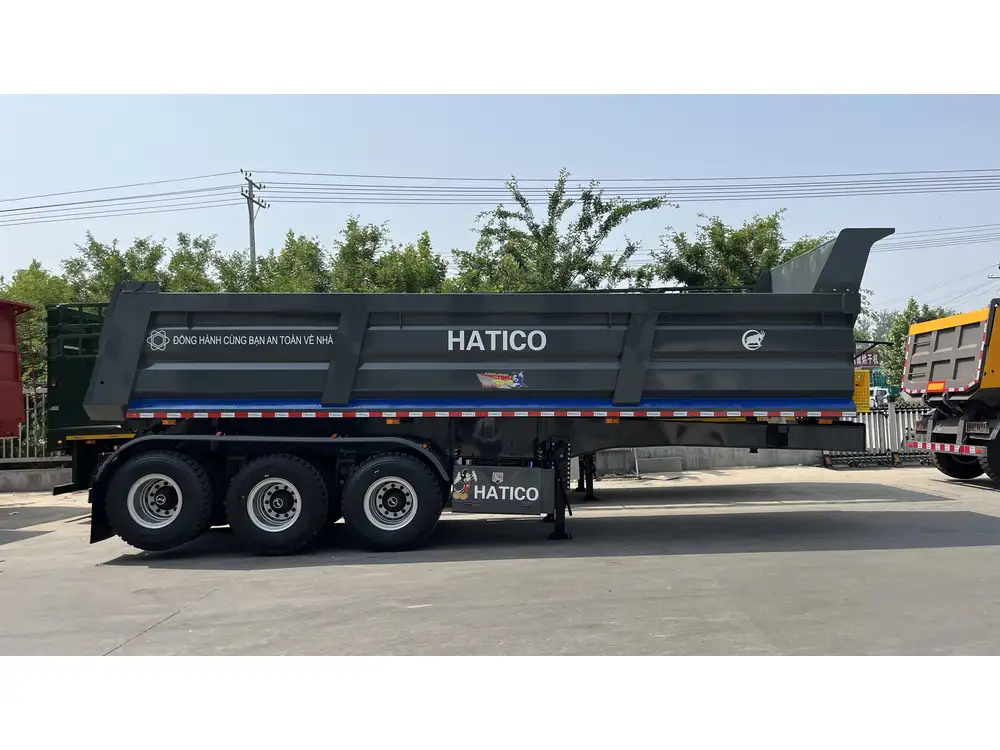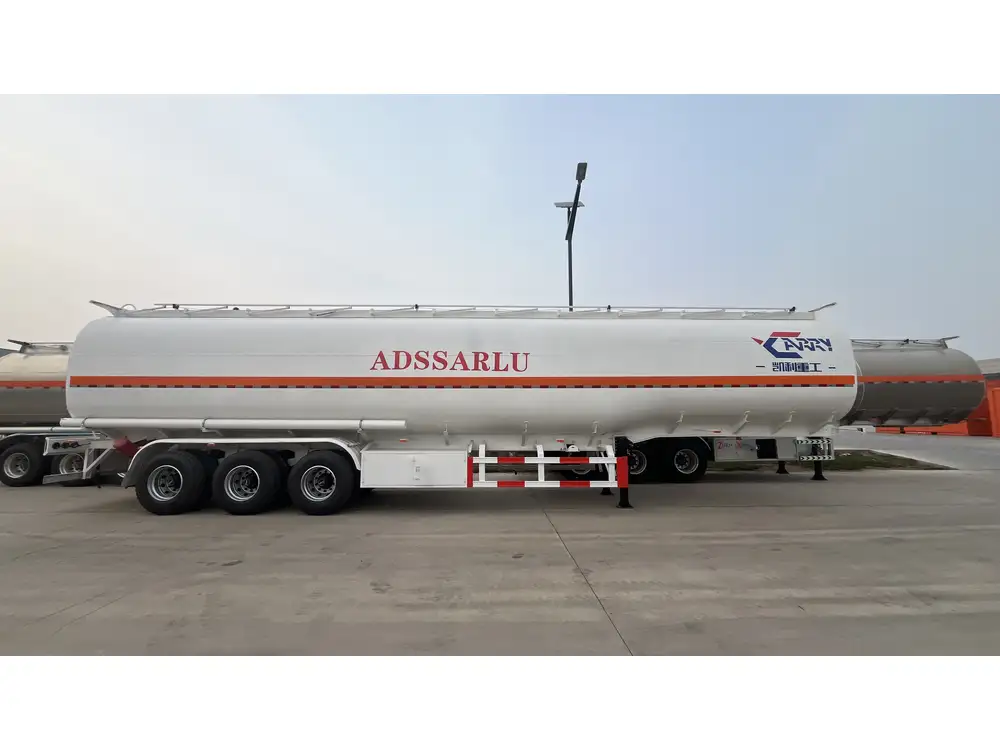When navigating the world of semi-truck logistics, understanding every component, including the semi-trailer tires, is vital. But just how tall are these crucial components? The answer might seem straightforward, yet delving deeper reveals layers of complexity involving regulations, performance metrics, and operational implications. Let’s explore the nuances of semi-trailer tire sizes, their importance, and what factors influence their height.
Tire Dimensions Explained
The Importance of Tire Size
Tire size is categorized using standardized parameters typically expressed as a series of numbers and letters on the tire’s sidewall. A standard semi-trailer tire dimension might be represented as 255/70R22.5, where:
- 255: tire width in millimeters.
- 70: aspect ratio (the height of the sidewall as a percentage of the width).
- R: indicates radial construction.
- 22.5: represents the diameter of the wheel rim in inches.
To ascertain the height of these tires, one must consider both the aspect ratio and the wheel rim size.

Semi-Trailer Tire Size Breakdown
| Tire Size | Width (mm) | Aspect Ratio | Rim Size (inches) | Approx. Diameter (inches) |
|---|---|---|---|---|
| 255/70R22.5 | 255 | 70% | 22.5 | ~39.5 |
| 275/70R22.5 | 275 | 70% | 22.5 | ~40.4 |
| 295/75R22.5 | 295 | 75% | 22.5 | ~41.5 |
| 11R22.5 | 11 inches | N/A | 22.5 | ~41.8 |
Height Calculation
For a detailed calculation of tire height, the following formula can be used:
- Convert the tire width from millimeters to inches (1 mm = 0.03937 inches).
- Calculate the sidewall height: [ \text{Sidewall height} = \left( \text{Width in inches} \times \frac{\text{Aspect Ratio}}{100} \right) \times 2 ] This is doubled because a tire has two sidewalls (top and bottom).
- Add the rim diameter to the sidewall height to achieve total tire height.
For instance, using a 255/70R22.5 tire:
- Tire width = 255 mm * 0.03937 = 10.04 inches
- Sidewall height = (10.04 \, \text{inches} \times \frac{70}{100} \times 2 = 14.056 \, \text{inches})
- Total height = (14.056 + 22.5 = 36.556 \, \text{inches} \approx 36.6 \, \text{inches})
Variability in Tire Height

Influencing Factors
Several elements influence the effective height of semi-trailer tires:
- Load Capacity: Tires are engineered for specific load ratings. Higher loads can cause sidewalls to flex, effectively changing stated heights.
- Tread Wear: As tires age and wear down, the height decreases. This is critical for ensuring consistent performance and safety.
- Inflation Pressure: Proper tire pressure ensures the tire maintains its specified height. Under-inflation can lead to a flatter appearance, altering performance characteristics.
Regulations and Standards
Tires must comply with state and federal regulations with respect to size and height, affecting not just operation but safety protocols. This compliance entails understanding legal height limits for trucks, which can vary by state or country.
| Regulation | Description |
|---|---|
| Federal Law | Limits typically dictate a maximum height (including the load) to ensure compliance with standard bridge laws and road safety. |
| State Regulations | Local regulations may impose stricter limits on height, depending on road infrastructure. |
Tire Types and Their Heights
Different types of trailers—whether flatbeds, refrigerated, or tankers—utilize various tire styles, each impacting the overall trailer height.

Common Tire Types
| Tire Type | Applications | Typical Height Range |
|---|---|---|
| All-Position Tires | Versatile use across different axle positions. | 36 – 41 inches |
| Drive Tires | Designed for traction in driving applications. | 37 – 42 inches |
| Steer Tires | Engineered for steering stability and control. | 36 – 41 inches |
Implications of Tire Height in Operations
Performance and Efficiency
Tire height can influence vehicle dynamics, including handling, fuel efficiency, and wear. Taller tires can enhance highway fuel economy by reducing RPMs at cruising speed, yet can also heighten the risk of rollovers. Conversely, shorter tires usually provide improved stability, especially when loaded.

Maintenance Considerations
Understanding the height and specifications of semi-trailer tires aids in maintenance strategies to maximize lifespan and safety.
- Regular Inspections: Consistent assessment of tire pressure, tread depth, and overall condition ensures optimal performance and adherence to legal safety standards.
- Proper Rotation: Rotating tires can mitigate uneven wear and help maintain uniform height across the tires, enhancing stability.
Common Questions About Semi-Trailer Tire Heights
How Often Should Tires Be Replaced?
Tires should generally be replaced every 6 years, but this can vary based on tread wear, damage, or if they exceed the said height due to excessive wear and tear.

What Are the Consequences of Incorrect Tire Sizes?
Choosing incorrect tire sizes can lead to unsafe driving conditions, increased fuel consumption, and potential regulatory violations, culminating in costly fines or operational downtimes.
Can Semi-Trailer Tires Be Retreaded?
Yes, retreading is an option for certain tires, extending their lifespan and lowering costs. However, the retreading process and the subsequent tire height must comply with safety standards.
Conclusion: The Significance of Tire Height in Semi-Trailers
Understanding how tall semi-trailer tires are encompasses more than a simple measurement; it’s about becoming adept in an intricate web of factors that contribute to performance, safety, and compliance. By appreciating the calculations and implications tied to tire height, as well as the variables influencing them, stakeholders can ensure effective operation and maintenance practices.
For manufacturers, suppliers, and logistics companies, staying informed about tire specifications will result in smarter purchasing decisions and enhanced safety measures. The world of semi-trailer tires may seem an intricate puzzle, yet every piece—from height to wear—plays a crucial role in the seamless operation of freight transport.
With thorough knowledge on your side, selecting the right semi-trailer tires not only drives operational efficiency but also empowers compliance adherence, contributing overall to safer and more profitable transportation ventures.



